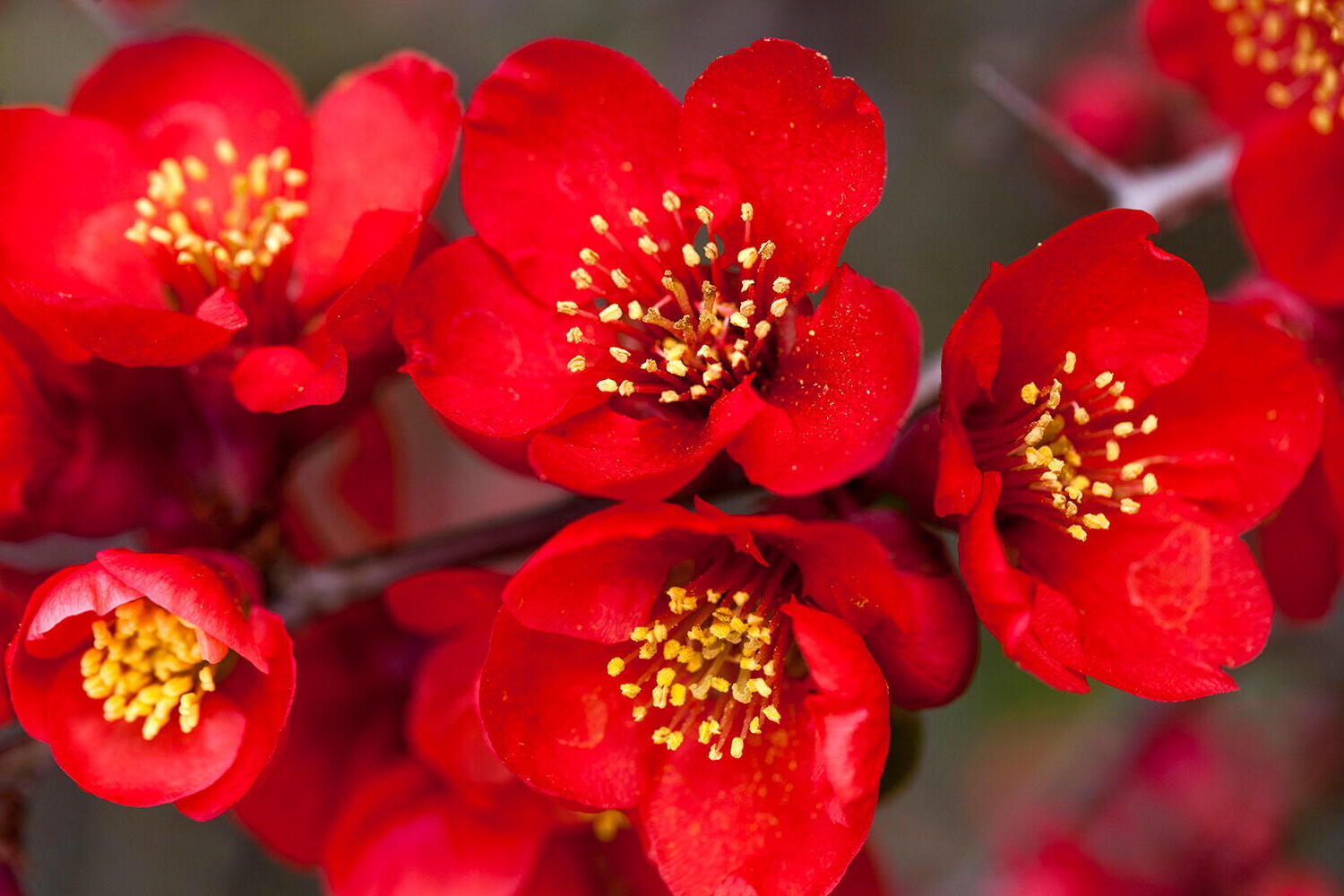
Quince (ornamental), often overshadowed by its fruit-bearing cousin, holds a treasure trove of fascinating facts. Did you know this hardy shrub can thrive in various climates, making it a favorite for gardeners worldwide? Its vibrant blooms, ranging from fiery reds to soft pinks, add a splash of color to any landscape. Beyond its beauty, quince has a rich history, dating back to ancient civilizations where it symbolized love and fertility. Quince (ornamental) isn't just a pretty face; it's also a magnet for pollinators, supporting local ecosystems. Whether you're a gardening newbie or a seasoned pro, there's always something new to learn about this versatile plant. Ready to dig in? Let's uncover 30 intriguing facts about quince (ornamental)!
What is Ornamental Quince?
Ornamental quince, also known as Chaenomeles, is a deciduous shrub that adds a splash of color to gardens. Its vibrant flowers and unique fruit make it a popular choice for landscaping.
- Ornamental quince belongs to the Rosaceae family, which includes roses, apples, and pears.
- This shrub is native to East Asia, particularly Japan, China, and Korea.
- It typically blooms in early spring, producing bright red, pink, or white flowers.
- The flowers of ornamental quince are often one of the first signs of spring, appearing before the leaves.
- The plant can grow up to 10 feet tall, making it a striking addition to any garden.
Unique Characteristics of Ornamental Quince
Ornamental quince stands out due to its distinct features, from its flowers to its fruit. Let's explore what makes this plant unique.
- The flowers have five petals and are about 1.5 inches in diameter.
- Ornamental quince produces small, hard fruits that resemble miniature apples.
- These fruits are typically yellow-green and can be used to make jellies and preserves.
- The leaves are dark green and glossy, providing a beautiful contrast to the bright flowers.
- The branches of ornamental quince are often thorny, which can deter animals from nibbling on them.
Growing Conditions for Ornamental Quince
Understanding the ideal growing conditions can help you cultivate a healthy and vibrant ornamental quince in your garden.
- Ornamental quince thrives in full sun but can tolerate partial shade.
- It prefers well-drained soil but can adapt to various soil types, including clay and sandy soils.
- This shrub is drought-tolerant once established, making it a low-maintenance option for gardeners.
- Regular pruning helps maintain its shape and encourages more prolific blooming.
- Ornamental quince is hardy in USDA zones 4-9, meaning it can withstand a range of temperatures.
Uses and Benefits of Ornamental Quince
Beyond its beauty, ornamental quince offers several practical uses and benefits.
- The flowers attract pollinators like bees and butterflies, supporting local ecosystems.
- Ornamental quince can be used as a hedge or border plant due to its dense growth and thorny branches.
- The fruit, while not typically eaten raw, can be cooked and used in various recipes.
- In traditional medicine, quince fruit has been used to treat digestive issues and sore throats.
- The plant's vibrant flowers make it a popular choice for cut flower arrangements.
Interesting Facts About Ornamental Quince
Here are some lesser-known facts that highlight the fascinating aspects of ornamental quince.
- In Japan, ornamental quince is known as "Kusa-boke" and is often used in bonsai.
- The plant has been cultivated for over a thousand years, with historical records dating back to ancient China.
- Ornamental quince can live for several decades, with some plants reaching over 50 years old.
- The fruit contains high levels of pectin, making it ideal for making jams and jellies.
- Despite its thorny branches, ornamental quince is not related to true thorns like those found on roses.
Care Tips for Ornamental Quince
Proper care ensures that your ornamental quince remains healthy and vibrant year after year.
- Water the plant regularly during its first year to help establish a strong root system.
- Apply a balanced fertilizer in early spring to promote healthy growth and blooming.
- Mulch around the base of the plant to retain moisture and suppress weeds.
- Prune after flowering to remove dead or damaged branches and shape the plant.
- Watch for common pests like aphids and spider mites, and treat them promptly to prevent damage.
The Final Word on Quince
Quince, with its vibrant blossoms and tart fruit, is more than just a pretty plant. This ornamental shrub has a rich history, dating back to ancient times, and has been used in cooking, medicine, and even folklore. Its hardy nature makes it a favorite among gardeners, while its unique flavor adds a special touch to various dishes. Whether you're a gardening enthusiast or a culinary explorer, quince offers something for everyone. From its beautiful flowers to its versatile fruit, this plant is a true gem in any garden. So next time you see a quince, take a moment to appreciate its many facets. It's not just a plant; it's a piece of history, a culinary delight, and a garden treasure all rolled into one. Happy gardening!
Was this page helpful?
Our commitment to delivering trustworthy and engaging content is at the heart of what we do. Each fact on our site is contributed by real users like you, bringing a wealth of diverse insights and information. To ensure the highest standards of accuracy and reliability, our dedicated editors meticulously review each submission. This process guarantees that the facts we share are not only fascinating but also credible. Trust in our commitment to quality and authenticity as you explore and learn with us.
